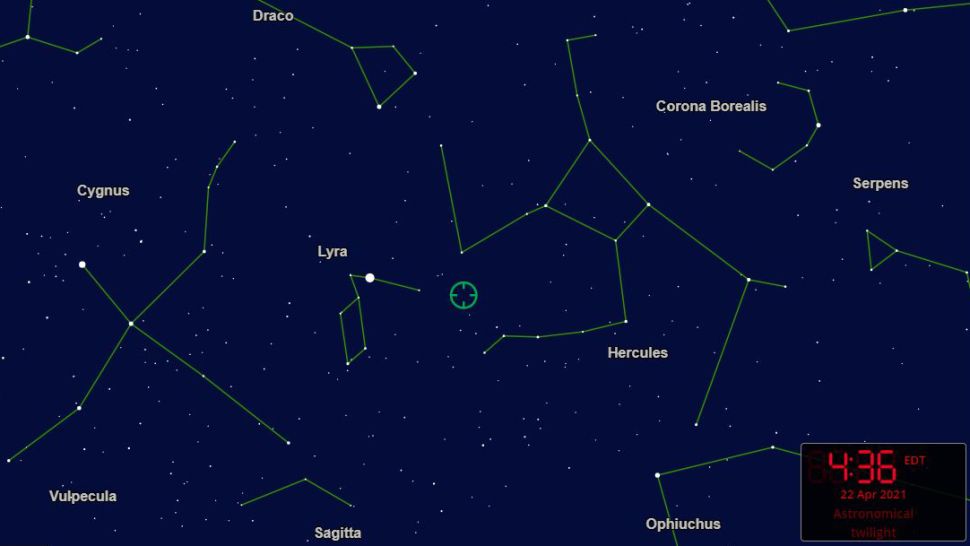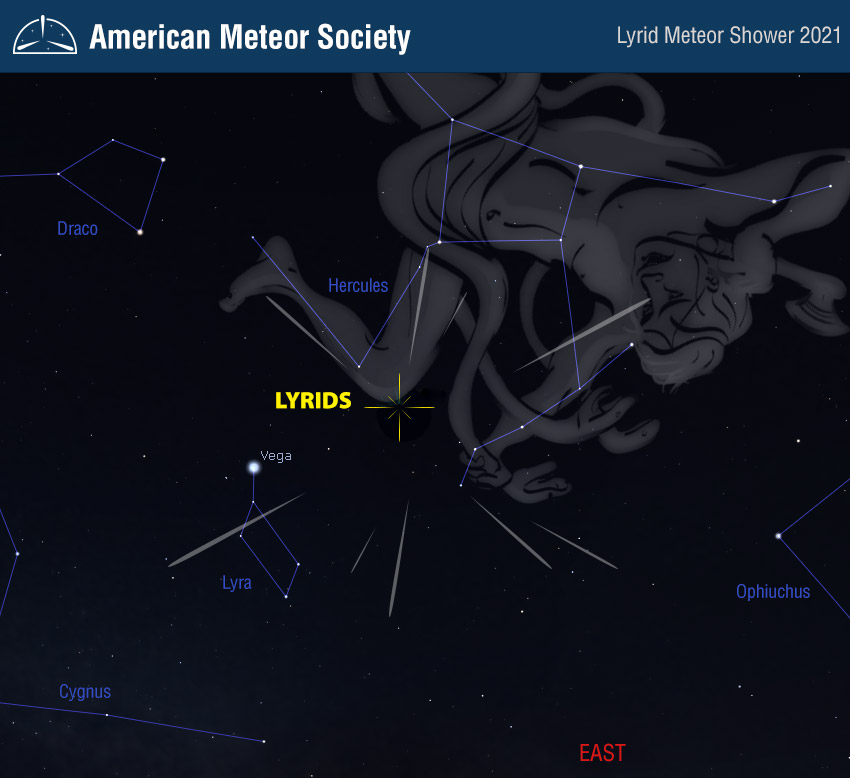The annual Lyrid meteor shower signals the end of slow meteor activity, which occurs each year between January and mid-April. There are no significant meteor showers during that period. The Lyrids—which are one of Spring’s most spectacular celestial displays—are active each year from approximately April 16 to 25. The 2021 shower should peak in the predawn hours on Thursday, April 22.
The Lyrid meteor shower is among the oldest known meteor showers. Records of this shower date go back nearly 2,700 years. The ancient Chinese are said to have observed the Lyrid meteors “falling like rain” in 687 B.C.
The prominent Lyrid meteor shower will become visible, weather permitting, in the Northern Hemisphere beginning at about 10:30 p.m. local time and continuing overnight. The optimum viewing should be before dawn after the waxing gibbous moon sets to eliminate interference from moonlight.
The individual meteors of the Lyrids are actually minuscule space rocks that appear when the Earth, in its orbit around the sun, smashes into the remnants of Comet Thatcher (C/1861 G1) that swings by Earth every 415 years. The last excursion into our planet’s neighborhood was in 1861. This comet isn’t expected to return until 2276.
Although they only produce 10 to 15 meteors per hour at their peak, the Lyrids traveling at 110,000 miles per hour are fast and bright, leaving long trails in the sky.
The radiant, or point from which the shooting stars appear to originate, is in the constellation Lyra, high above the horizon. You can locate Lyra by looking for Vega, one of the brightest stars in the northern sky. You should look slightly away from Lyra, because the meteors with the longest trails will appear a considerable distance outside of the constellation.

A telescope or binoculars are not needed to view a meteor shower. The weather is cool, so dress warmly. Stay outside 20 minutes before you begin searching for the meteors. This will give your eyes time to adjust to the darkness. Move away from any outdoor lights, such as a hill or a location in the country, and use a lounge chair to avoid neck pain sky watching.
NASA meteor expert Bill Cooke says you should see the most meteors Wednesday into Thursday morning (April 21 to April 22). “Get up early before dawn, after the moon has set. You have a pretty good chance of seeing some Lyrids this year.”
NASA cautions that the window of ideal viewing time Thursday morning is very short, most likely only about half an hour before the sky brightens, just before 5 a.m.











